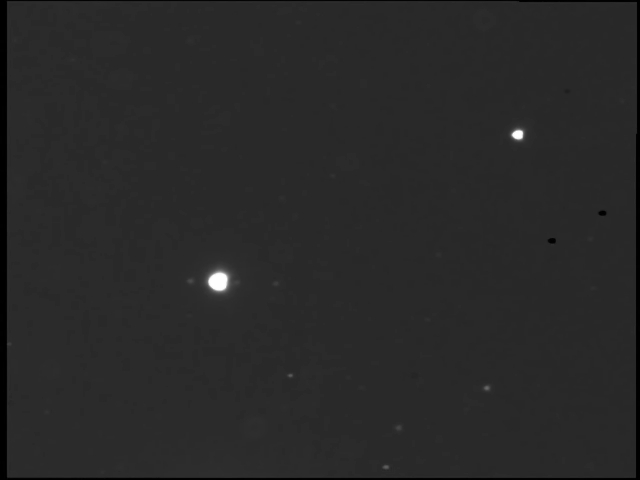
On UT 2007 Aug 15, one of Uranus' moons, Umbriel, passed directly in front of another of its moons, Titania. Chad prepared carefully for this event, as you can read in IOTA Occultations group message 23636 and was able to record the event. He described his work in another IOTA Occultations message and later posted a copy of the data for all to see.
His original data conisted of 190 images, each a 15-second exposure. For convenience, he made it available as a digital movie file, in which each real image was replicated several times so that the event appeared to occur in "slow motion." I grabbed a copy of his movie file and tried to decompose it into the individual frames for analysis.
Each of the video frames consists of digitized frames of 640 x 480 pixels. I used TMPGEnc to break the WMV video file into individual JPEG images, each of which had 8 bits per pixel. Here's an example, frame number 310:

Chad labelled the objects visible in the image at the start of his movie:

Now, a note on "frame index numbers." In the WMV movie file posted by Chad, the sequence of images starts at frame number 300 and continues to frame number 1011. That's a total of 812 "movie frames." However, Chad explained that his original dataset consisted of only 190 images. Looking at the "movie frames," I quickly saw that they consisted of sets of nearly identical images: maybe 4 in a row which looked nearly identical, then 4 of a different image, then 5 of a different image, and so forth. I do not know how exactly to split up these chunks of frames in an automated manner and pick out just one image from each chunk. Therefore, in the following analysis, there will be sets of 3, 4 or 5 consecutive (nearly) identical measurements, which really correspond to just a single original image.
I followed my usual procedure:
I decided that the aperture of radius 6 pixels yields the best results, but I'll provide the measurements for all three apertures in the tables below. I'll use a linear scale in integrated light intensity.
I measured the raw, instrumental magnitudes for each of five objects:
After extracting the instrumental magnitudes, I ran them through my ensemble photometry package to remove common zero-point variations in the images. During this analysis, I realized that
So, let's look at the light curves. First, I'll show all the measurements. Note that in all the graphs below, I shift the USNO star (cyan) by +1.0 magnitudes and Oberon (dark blue) by +2.0 magnitudes for clarity.
Light curve through an aperture of radius 4 pixels. Note how the photometry grows bad quickly after frame 400 or so.
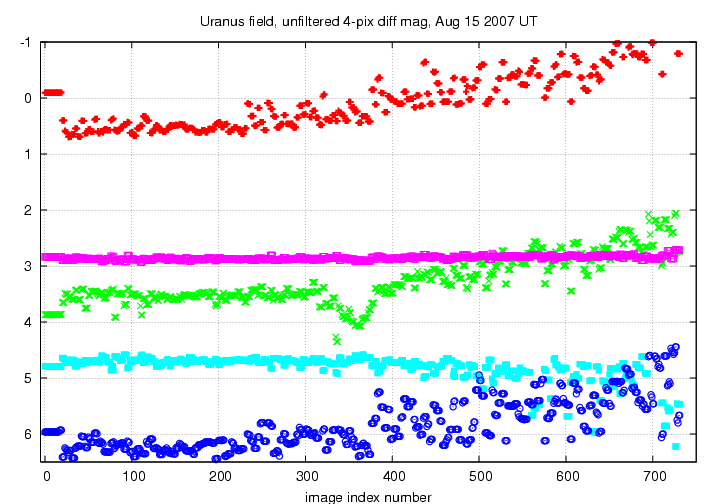
Now using an aperture of radius 5 pixels:
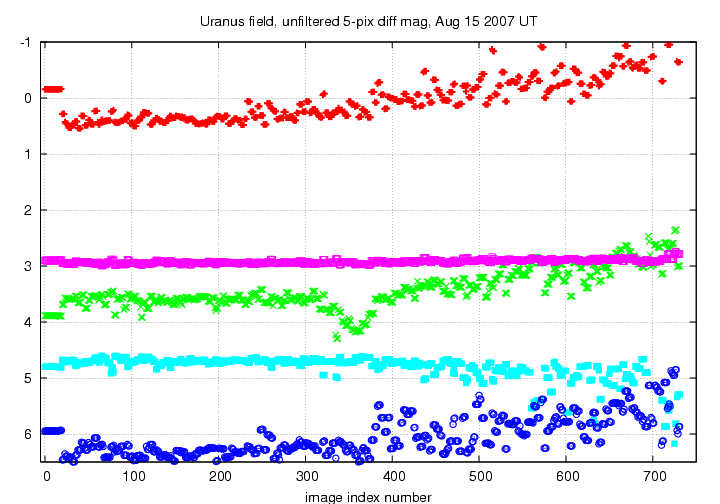
Now using an aperture of radius 6 pixels:
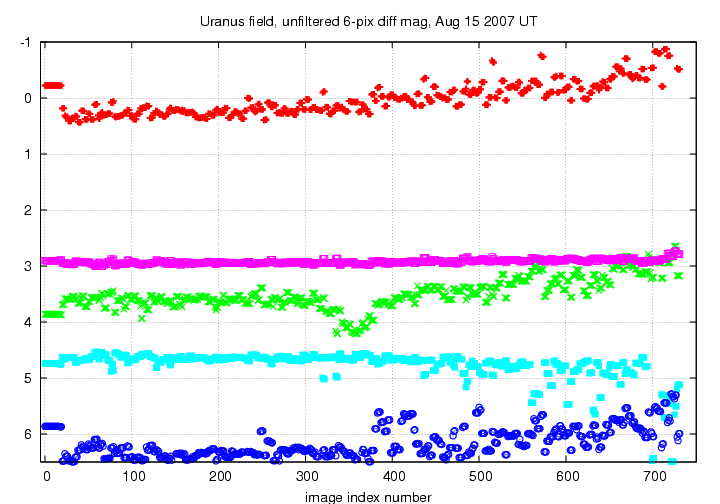
It's clear that the occultation takes place around frame 350. Let's look at a closeup around that time. I'll show only the two good comparison objects in addition to Umbriel/Titania.
Using an aperture of radius 4 pixels:
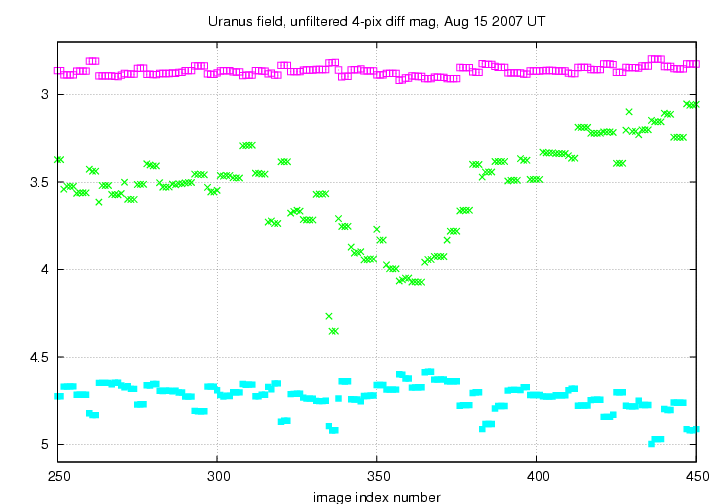
Using an aperture of radius 5 pixels:
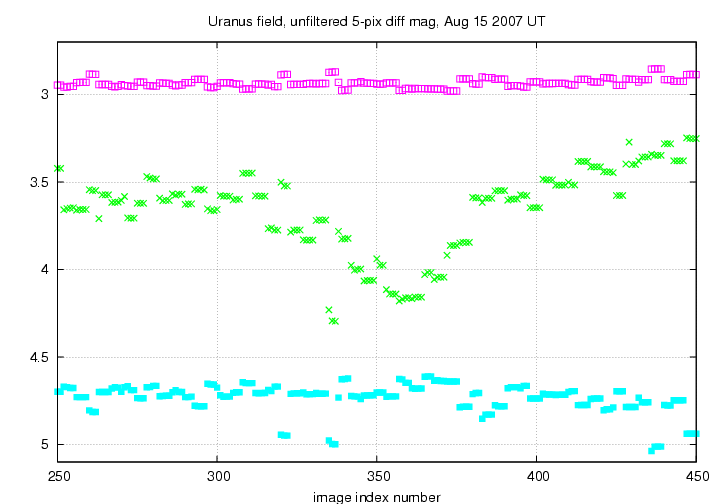
Using an aperture of radius 6 pixels:
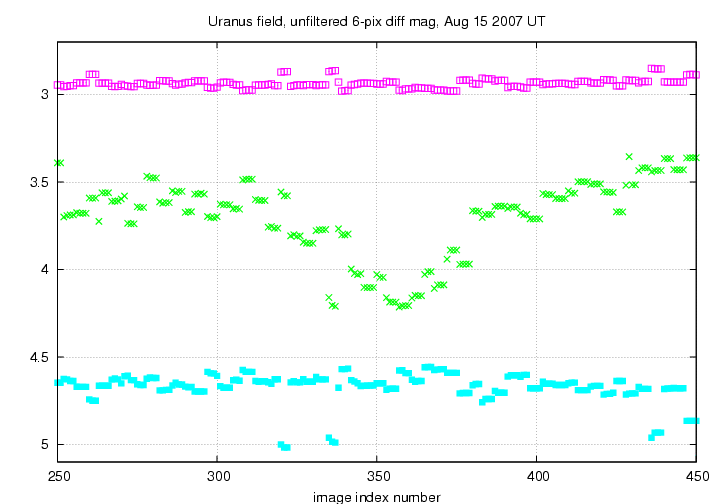
Here are the light curve measurements for the combined Titania/Oberon light in a plain ASCII text file. The interesting columns are
col 4 "movie frame index number" col 7 differential magnitude of Titania/Oberon in ensemble solution
In order for these to be useful, the "movie index number" must be translated into a true index in the original set of 190 images. Perhaps Chad could provide the information needed to do this ...